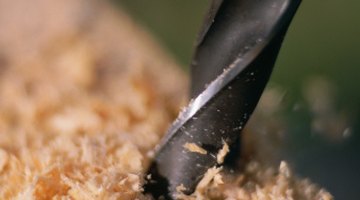What Are Silver & Deming Drills?
Table of Contents
In wood and metal working, hard drill bits do the hard jobs. The U.S. has a long history of producing those bits, starting with the wheelwright industry in the 19th century. Sturdy wagon wheels carried people and supplies into westward expansion.

These settlers demanded tough fasteners for tough materials that needed to be drilled.
Silver & Deming Drill Bits
When Silver & Deming drills are mentioned, the people are actually speaking of drill bits. Silver and Deming drills use all-purpose bits wherever the maximum drill chuck capacity is 1/2 inch. They are variously called S&D Drills, Blacksmith Drills (or Prentice Drills in Canada). They run to a 6-inch overall length with a 3-inch shank and are noted for the shank being smaller in diameter than the bit itself.
118-Degree Bits
Silver & Deming bits come in a variety of fractional and metric sizes and functions. Among the standard and heavy-duty bits are those with 118-degree points, used for portable or machine drilling of ferrous or non-ferrous metals, mild steels, aluminum and magnesium alloys.
135-Degree Bits
Among the heavy duty bits are those with 135-degree points. Use them for portable or machine drilling of hard steels, stainless steels, titanium and other hard metals.
Other Features
Silver & Deming bits boast an oxide finish on the flutes that helps to retain lubricants and ease chip welding. A tin-coated shank and tiitanium nitride-coated bit will drill 200% to 700% more holes than uncoated tools. Some bits with split points are self-centering and break up chips during drilling. Some shanks are three-sided for use in three-sided chucks.
Silver & Deming History
Silver & Deming evolved from the 1854 founding by Albert R. Silver and John Deming of a company to make agricultural machines. They made a variety of machines primarily aimed at wheelwrights but eventually moved into drilling machines. They came up with the large-size twist drill bit with a turned-down shaft that someone could use in a chuck smaller than the bit's cutting diameter; however, they did not patent the idea and it was soon copied by other companies. The term Silver & Deming drills continues to be used as a generic term for this type of drill bit.
References
Writer Bio
George Joye has edited several local interest publications, including entertainment, arts and culture magazines. He began writing in the late 1970s as a stringer for suburban newspapers around Milwaukee and has published in "Bluegrass Unlimited." Joye earned a Bachelor of Arts in English from the University of Wisconsin-Milwaukee.
Photo Credits
- Stockbyte/Stockbyte/Getty Images
- Stockbyte/Stockbyte/Getty Images
More Articles



